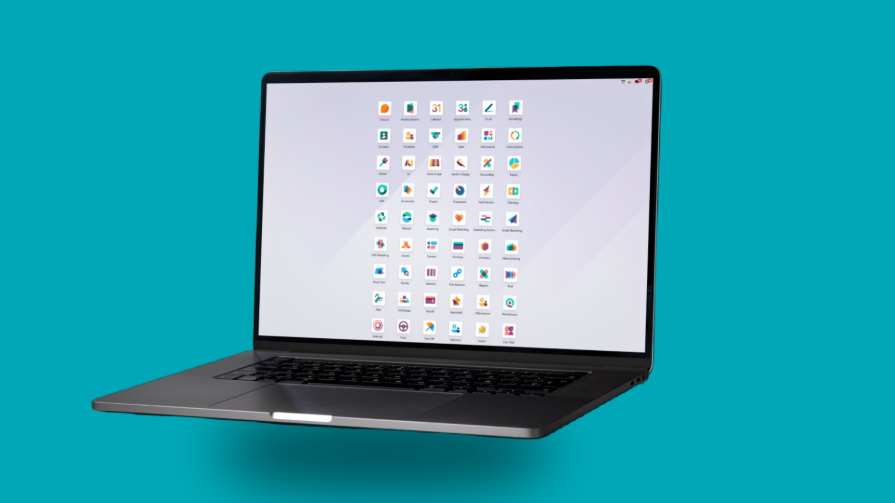When Xero launched back in 2006, it was a breath of fresh air for small businesses. Finally, accounting wasn’t tied to a single desktop, you could log in anywhere, send invoices instantly, and keep your books in the cloud.
For many finance teams, it was the first step away from paper and spreadsheets - a huge leap forward in its time.
But fast-forward to 2025, and the landscape has changed. Businesses now run across CRM systems, eCommerce sites, inventory platforms, projects, and HR tools. Finance is no longer just about balancing the books, it’s about connecting every part of the business in real time.
And that’s where Xero starts to show its limitations.
What Xero does well
Before we look at where it falls short, it’s fair to recognise what Xero gets right.
Clean, intuitive interface
Accountants and small-business owners praise Xero for its simplicity and ease of use.
Strong invoicing tools
You can create professional invoices and track payments quickly.
Multi-currency and mobile access
Great for smaller global teams and on-the-go management.
Solid
bank reconciliation
Its core accounting features still work well for basic bookkeeping.
For freelancers, start-ups, and small firms, Xero offers a polished accounting experience.
But as your business grows, with more data, departments, and transactions, Xero can hold you back from scaling effectively.
The growing pains of Xero

Xero performs well as a stand-alone accounting solution, but it starts to struggle when businesses need an all-in-one platform that connects finance with the rest of their operations. Here’s why:
- Limited integration beyond Accounting
While Xero connects to around 400 third-party apps, many of those integrations come with extra costs, manual setup, and inconsistent data sync. There’s no native way to link inventory, sales, purchasing, and projects into one real-time view.
- Add-ons add up
As soon as you try to extend Xero beyond accounting (to handle CRM, expenses, or stock management) you’re relying on separate systems. Each integration means another subscription, another data set to reconcile, and more room for errors.
- Limited automation and customisation
Xero’s core automation features are basic compared to modern ERP systems. Tasks like multi-step approvals, automated deferred revenues, and intelligent expense recognition often require manual workarounds or plug-ins.
- Narrow geographical support
Xero is supported in just five countries (Australia, New Zealand, UK, US, and South Africa). Global companies operating in other regions may find compliance and localisation limited.
The bigger picture: From software to platform
The modern finance function needs more than cloud access - it needs connection.
In Odoo, accounting is not a stand-alone app; it’s the financial engine driving a fully integrated business platform. Every sale, purchase, and payment flows directly into the books, in real time, without exports, imports, or third-party bridges.
That means:
- Instant insight across departments - see the impact of a sale, project, or stock movement immediately in your accounts.
- No data duplication - one source of truth for finance, sales, and operations.
- Scalable architecture - grow from a handful of users to hundreds without changing systems.
It’s a fundamental shift from “accounting software” to a connected finance platform.
Why firms are moving beyond Xero
The real innovation in accounting today goes beyond efficiency - it’s about connection, integrated data, and meaningful management insight.
When finance works hand-in-hand with every other part of the business, you gain insight that isolated systems simply can’t offer.
That’s why firms outgrowing Xero are turning to Odoo:

For accountants
end-to-end visibility from sales orders to cash flow.
For CFOs
accurate, real-time reporting that connects financial and operational data.
For business owners
one platform that adapts to growth without fragmenting processes.
From simplified to strategic
Xero offers simplified accounting. Odoo goes further - it makes accounting strategic.
By linking finance with every other function, businesses can spot trends early, forecast more accurately, and scale with confidence.
Because growth shouldn’t mean outgrowing your systems, it should mean unlocking their full potential.
Ready to see the difference?
If you’re starting to feel the limits of Xero, it might be time to look at what’s next!
Speak to our team of Odoo experts at Smart IT, and see how joined-up data and integrated reporting can uncover new opportunities for growth and competitive advantage.

The Evolution of Accounting: Why firms need to think beyond Xero